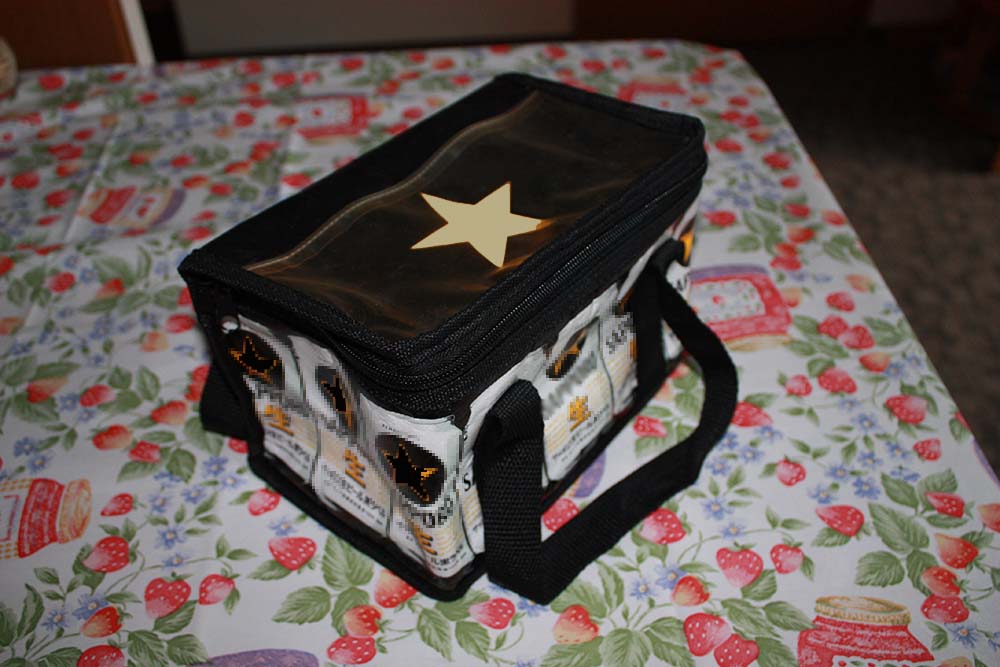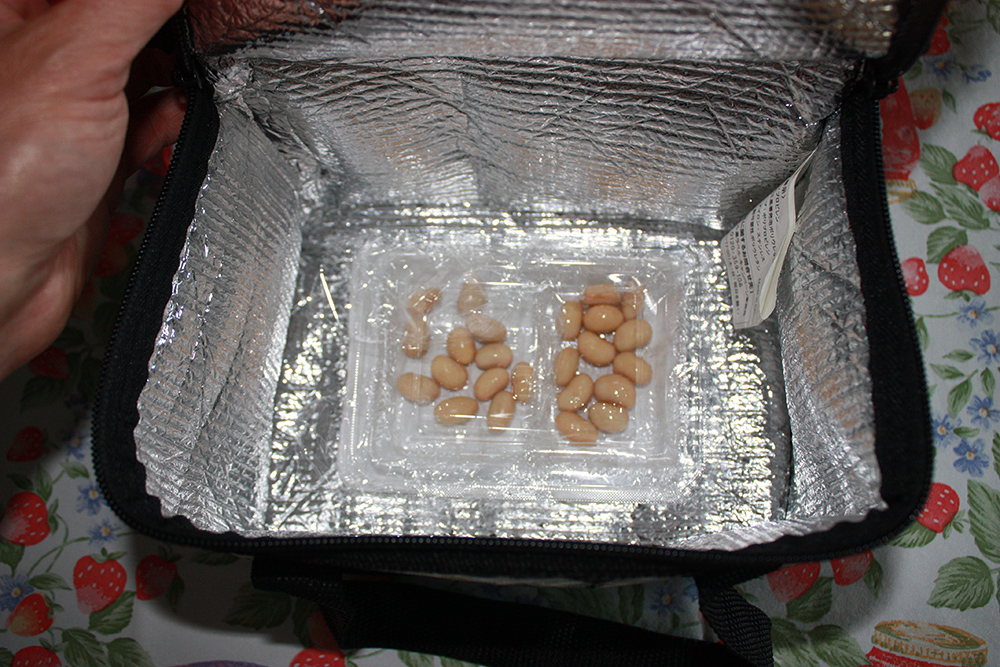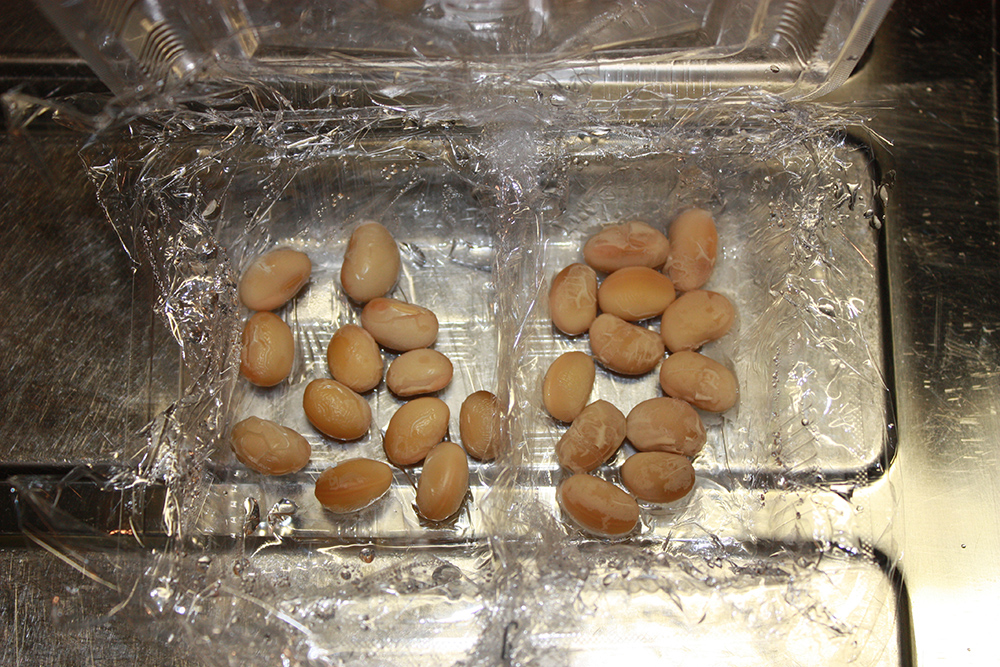What's New
HOME > What's New > 【New Topic】Let s try easy home-made experiments ! Vol.1

Northern Advancement Center for Science & Technology
H-RISE
5-3 Sakaemachi, Horonobe-cho, Teshio-gun, Hokkaido, 098-3221, Japan.
TEL+81-1632-9-4112
FAX +81-1632-9-4113
H-RISE
5-3 Sakaemachi, Horonobe-cho, Teshio-gun, Hokkaido, 098-3221, Japan.
TEL+81-1632-9-4112
FAX +81-1632-9-4113
【New Topic】Let s try easy home-made experiments ! Vol.1
2014.08.03

Pict 1. A simple small cool bag.

Pict. 2. Let s start by sandwithing the tray with disposable warmers.

Pict. 3. Right, natto; Left, control experiment
Introduction
“Let s try easy home-made experiments!” is started as one of new topics from today. In Vol.1, let’s try to make “natto (= fermentation of soybeans by Bacillus subtilis var. natto)”.
Since the year of 2012, I have taken on a class in a summer intensive course in a local college as part of regional contribution activities of our research institute. Not only do I give a lecture, but also I perform a very simple experiment in order that students can get hands-on experience instead of just sitting a seat during lecture.
Recently, the development of the Internet has allowed us to find almost all information that we want to know whenever or wherever we are. However, the custom of repeating trial-and-error and deeply thinking over “why?” through introspection seemed to have gradually tapered off. I believe it would be still important for us to have custom to think by ourselves in order to come up with a new idea. I hope this serial readings would be one of good opportunities for you to think “why?” by yourself with the benefits of the Internet.
Soybean fermentation experiment
Any people can easily find information on how to make natto by an Internet search. The concept in this serial readings is to use household utensils as much as possible.
Materials
1. 2 disposable body warmers.
2. A simple small cool bag (Pict. No.1).
3. A disposable plastic tray.
4. Commercially-available natto.
5. Soybeans (You can purchase cooked and ready-made soybeans).
Let s try !
Recipe
1. Boil the cooked and ready-made soybeans for about 1 min (to remove excess salt on the surface of the soybeans).
2. Prepare hot water, and soak commercially-available natto in a little bit hot water for about 1 min (to disinfect other contaminated bacteria except for Bacillus subtilis var. natto on the surface of the natto grains).
3. Mix the soybeans at the step No. 1 and natto at the step No.2.
4. Pick up ONLY soybeans from the step No. 3, and then put them into a disposable plastic tray.
5. Sandwich the plastic tray between 2 disposable body warmers. Put them into a simple small cool bag (Pict. 2).
6. Incubate for more than 12 hours (it is desirable to keep the temperature at around 40°C)
Results
Fermentation of soybeans was successful ! (right ones in Pict. 3) It means that natto has been successfully made. Although it is not discernable which is fermented soybeans (=natto) on this picture, we can distinguish home-made natto from the control experiment (not fermented soybeans; left ones in Pict. 3) by ascertaining whether the surface of soybeans has sticky paste or not to the touch. I had the courage to eat some of them. They were real natto. The home-made natto seemed to be better taste than commercially-availabe ones because I had the feeling of accomplishment of which I made by myself.
Attention.
I described this recipe ONLY for the purpose of experimental demonstration. Since I do not take the points of food hygiene into consideration, DO NOT EAT the experimental materials used in this recipe.
To be continued to Vol. 2.

















